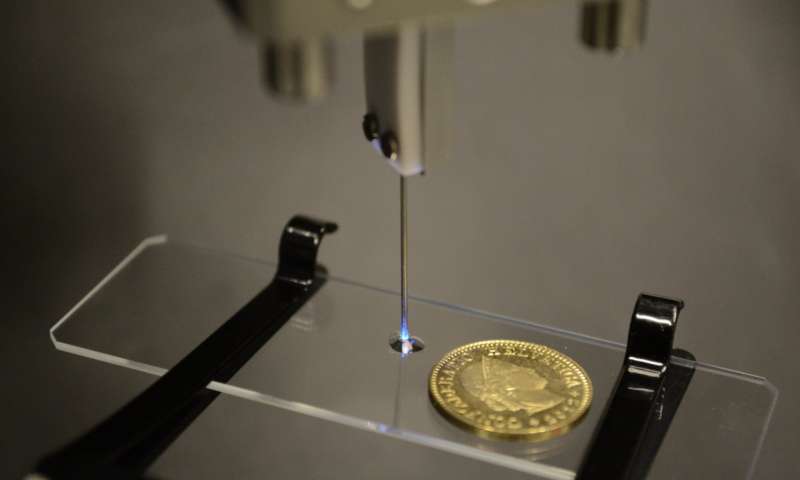According to researchers, optical fiber can be used to create microscopic structures with laser-based 3D printing. Some day for sure, one will use this technique with an endoscope to manufacture tiny biocompatible structures directly into tissue inside the body. This capability could enable new ways to repair tissue damage.
How optical fiber which is as thin as a human hair, can create microstructures with a 1.0-micron lateral (side-to-side) and 21.5-micron axial (depth) printing resolution?
To create the microstructures, the researchers dipped the end of an optical fiber into a liquid known as photopolymer that solidifies, or cures, when illuminated with a specific color of light. They used the optical fiber to deliver and digitally focus laser light point-by-point into the liquid to build a 3D microstructure.
By printing delicate details onto large parts, the new ultra-compact microfabrication tool could also be a useful add-on to today’s commercially available 3D printers that are used for everything from rapid prototyping to making personalized medical devices. “By using one printer head with a low resolution for the bulk parts and our device as a secondary printer head for the fine details, multi-resolution additive manufacturing could be achieved,” said research team leader Paul Delrot, from École Polytechnique Fédérale de Lausanne, Switzerland.

Why current techniques are difficult to apply?
Current laser-based microfabrication techniques rely on a non-linear optical phenomenon called two-photon photopolymerization to selectively cure a volume deep inside a liquid photosensitive material. These techniques are difficult to use for biomedical applications because two-photon photopolymerization requires complex and expensive lasers that emit very short pulses as well as bulky optical systems to deliver the light.
“Our group has expertise in manipulating and shaping light through optical fibers, which led us to think that microstructures could be printed with a compact system. In addition, to make the system more affordable, we took advantage of a photopolymer with a nonlinear dose response. This can work with a simple continuous-wave laser, so expensive pulsed lasers were not required,” said Delrot.
The whole research is entitled “Single-photon three-dimensional microfabrication through a multimode optical fiber,” and is published in Opt. Express, Volume 26, Issue 2, 1766-1778 (2018).
For further information about 3D Printing, follow us on our social networks and subscribe to our newsletter!





